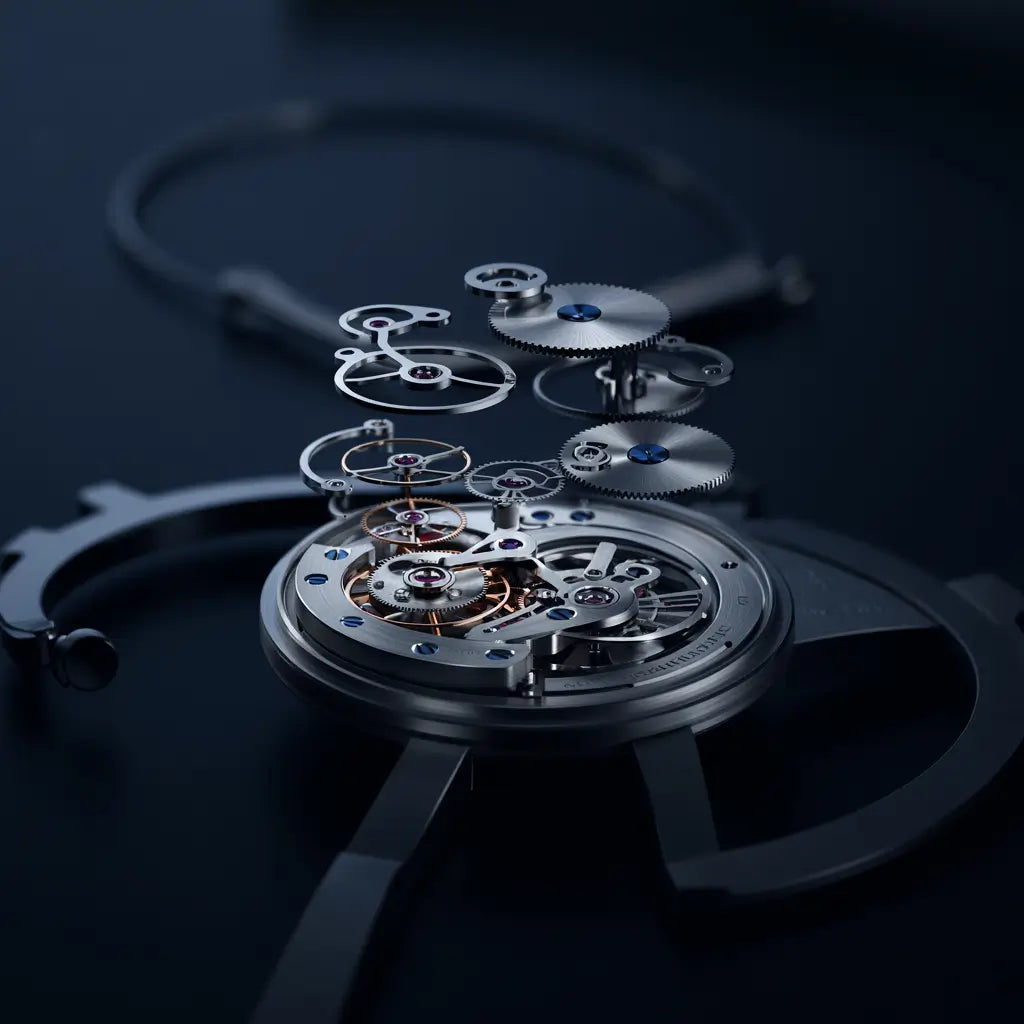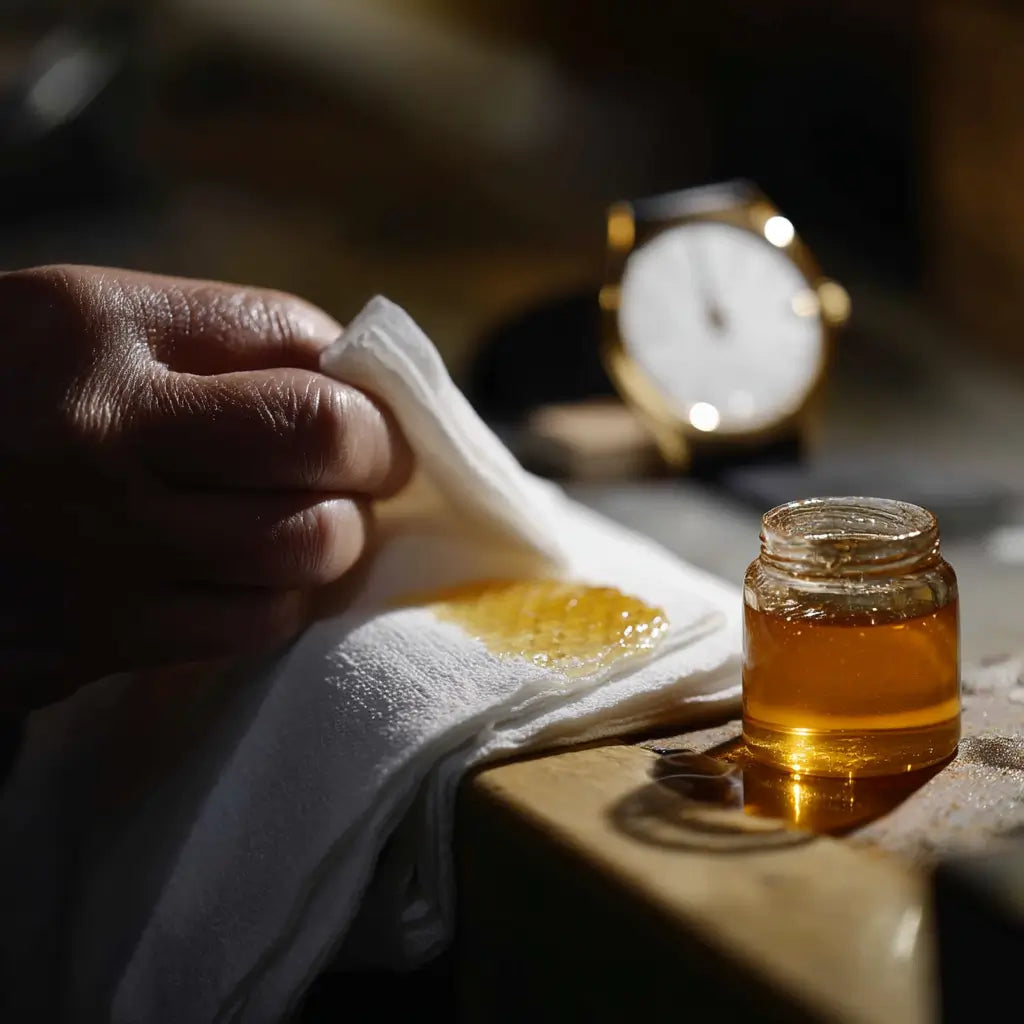Introduction: Why is removing scratches important?
Watches are not just tools for telling time; they are also style accessories, sometimes family heirlooms that span generations. A well-maintained watch can become a faithful companion for decades, even a lifetime.
Unfortunately, even with the greatest caution, scratches are practically inevitable over time. Whether it's an accidental knock, rubbing against a rough surface, or simply daily wear and tear, your precious watch can lose its original luster.
A scratched watch can lose not only its aesthetic value but also its emotional and financial worth. Restoring its appearance can extend its lifespan, preserve its shine, and maintain its value, especially if it's a collector's or luxury model.
In this article, we'll explore various methods to remove scratches from different types of watches, from classic techniques to the most innovative solutions.
Understanding Different Types of Scratches and Materials
Before you begin restoring your watch, it's essential to understand both the type of scratches and the material involved. Not all scratches are equal, and not all materials respond the same way to polishing methods.
Types of Scratches
- Superficial scratches: Only affect the surface and are generally easy to remove
- Medium scratches: Penetrate deeper and require more intensive treatment
- Deep scratches: May require professional intervention, especially on valuable pieces
Common Watch Materials
Watch Glasses
- Mineral glass: Resistant to light scratches but can become damaged over time
- Sapphire glass: Extremely hard and scratch-resistant (9 on the Mohs scale), but can still be scratched by harder materials
- Acrylic/plastic glass: More prone to scratches but also easier to polish
Cases and Bracelets
- Stainless steel: Most common material, relatively resistant but can be scratched
- Gold (yellow, rose, white): Softer than steel, thus more susceptible to scratches but also easier to polish
- Platinum: Dense and precious, with a distinctive gray tone, more resistant than gold but can still be scratched
- Titanium: Lightweight and hypoallergenic, more difficult to polish due to its hardness
- Ceramic: Very scratch-resistant but can break under significant impact
Now that we have a better understanding of the materials, let's explore the different methods for removing those unwanted scratches.
Classic Methods Revisited with Unique Tips
1. Toothpaste Method: Tips for Greater Effectiveness
Toothpaste is often cited as a miracle solution for light scratches, but few people know how to use it correctly.
Materials needed:
- White non-abrasive toothpaste (without grains or whitening agents)
- Mineral oil (one drop)
- Cotton swabs
- Microfiber cloth
- Lukewarm water
Improved process:
- First, clean your watch with a slightly damp cloth to remove dust and impurities
- Mix a small amount of toothpaste with a drop of mineral oil to improve lubrication during polishing
- Apply this mixture with a cotton swab for increased precision on specific areas
- Polish by making small circular movements for 2-3 minutes
- Rinse thoroughly with lukewarm water
- Dry with a clean microfiber cloth
Ideal for: Acrylic/plastic glass, stainless steel, superficial scratches on gold
Avoid using on: Sapphire glass (ineffective), ceramic, watches with special anti-reflective coating
2. Baking Soda Polishing: A Modified Approach
Baking soda is a mild abrasive that can work wonders when used correctly.
Materials needed:
- Baking soda
- Distilled water
- Soft-bristled brush (like a clean makeup brush)
- Microfiber cloth
- Small bowl for mixing
Improved process:
- Mix 2 parts baking soda with 1 part distilled water to create a thick paste
- Use a soft-bristled brush to apply the mixture to hard-to-reach areas
- Rub gently in circular movements for 1-2 minutes
- For steel or gold bracelets, you can apply light pressure
- Rinse thoroughly with distilled water to avoid mineral deposits
- Dry immediately and thoroughly
Ideal for: Stainless steel, gold, brass cases, mineral glass
Avoid using on: Platinum (too precious), surfaces with thin plating, ceramic
3. Diamond Paste: Advanced Technique for High-End Watches
If you own a luxury watch, this more sophisticated method might be the ideal solution.
Materials needed:
- Dual-grit diamond paste (3-6 microns then 0-2 microns)
- Felt applicator or polishing disc
- Mini rotary tool with adjustable speed (optional)
- Latex or nitrile gloves
- Microfiber cloth
Advanced process:
- Wear gloves to avoid leaving fingerprints on the clean surface
- Start with the coarser grit paste on a felt applicator
- If you have a rotary tool, use it at very low speed (less than 1000 rpm)
- Polish for 30 seconds to 1 minute, making circular movements
- Clean the surface with a clean cloth
- Repeat with the fine-grit paste to achieve a mirror finish
- Clean thoroughly to remove all residue
Ideal for: Scratched sapphire glass, ceramic, high-quality stainless steel, platinum
Avoid using on: Antique watches without expertise, pieces with thin plating (risk of wearing away the top layer)
Less Known Innovative Solutions
1. Using Natural Beeswax
An eco-friendly and gentle solution that can work wonders, especially for light scratches.
Materials needed:
- Pure natural beeswax
- Soft cotton cloth
- Gentle heat source (such as rubbing between your fingers)
Process:
- Warm a small amount of beeswax between your fingers to soften it
- Apply it gently to the scratched surface
- Let it sit for 2-3 minutes
- Polish with a soft cloth until you achieve a shiny surface
- Repeat if necessary
This method works by temporarily filling in micro-scratches, making them virtually invisible. It's an ideal solution when you don't have access to specialized products.
Ideal for: Acrylic/plastic glass, polished finishes on steel and gold
Avoid using on: Sapphire glass (ineffective), matte surfaces (may create shiny areas)
2. Ultrasonic Vibration Polishing
This advanced technique is perfect for delicate or vintage watches.
Materials needed:
- Ultrasonic cleaner (available in electronics stores)
- Slightly abrasive solution (such as diluted cerium oxide)
- Distilled water
- Microfiber cloth
Process:
- Fill the ultrasonic cleaner with distilled water
- Add a few drops of diluted abrasive solution
- Place only the scratched part in contact with the liquid
- Run the device for 1-2 minutes
- Rinse thoroughly and dry
Ultrasonic vibrations help smooth out scratches without excessive manual pressure, reducing the risk of damage.
Ideal for: Fragile or vintage watches, delicate timepieces
Avoid using on: Non-water-resistant watches (unless you only submerge the bracelet)
Precautions and Practical Advice
Before you begin polishing your precious watch, consider these essential recommendations:
- Test first: Always try your method on a small, inconspicuous area
- Protection: Mask areas you don't want to polish with tape
- Patience: Proceed in gradual steps rather than trying to remove all scratches at once
- Valuable watches: For expensive or collectible pieces, consult a professional watchmaker
- Water resistance: After any polishing, your watch's water resistance may be compromised - have it checked if necessary
Preventing Future Scratches
1. Invisible Protective Films
Investing in a transparent protective film specifically designed for watches can be an excellent preventive solution.
How to proceed:
- Choose a film adapted to the shape of your watch
- Clean the surface perfectly before application
- Apply carefully, avoiding air bubbles
- Replace the film every 6-12 months or as soon as it shows signs of wear
2. Regular Cleaning
Regular maintenance can prevent the accumulation of abrasive particles that cause micro-scratches.
Recommended routine:
- Use a microfiber cloth dampened with distilled water and a few drops of mild soap
- Clean your watch at least once a week
- Pay particular attention to spaces between bracelet links
- Rinse with distilled water and dry immediately
3. Proper Storage
How you store your watch can greatly affect its longevity.
Optimal solutions:
- Invest in a case lined with soft fabric
- For collections, opt for a watch box with individual compartments
- Keep your watches in a humidity-controlled environment to prevent oxidation
- Avoid storing your watches with other jewelry that could scratch them
When to Consult a Professional
Despite all these methods, some situations require expert intervention:
- Deep scratches on high-value watches
- Scratches on collectible or vintage watches
- Damage affecting the mechanism or water resistance
- Uncertainty about your watch's material or finish
A professional watchmaker has specialized tools and techniques that are not accessible to amateurs. The service cost can range from €50 to several hundred euros depending on the complexity and value of the watch, but it's a wise investment for precious pieces.
Conclusion: Restoring Timeless Beauty
By combining these classic and innovative methods, you can not only remove scratches but also bring your favorite watch back to life. Remember that each material requires specific attention, so always adapt your tools and products accordingly.
Taking care of your watch is not just a matter of aesthetics; it's also a way to preserve an object that tells a story, whether it's a family heirloom or a personal reward. With the appropriate techniques and a little patience, you can maintain your timepiece's shine for years to come.
Share your experiences and personal tips for maintaining your favorite watches with us!
FAQ - Frequently Asked Questions
What are the advantages and disadvantages of using Brasso to remove scratches from a watch?
Brasso is effective on brass cases and certain metals, but can be too abrasive for delicate finishes. Avoid it on gold or platinum, and never use it on watch glasses.
How do I know if a polishing product is suitable for my watch material?
Consult your watch manual or contact the manufacturer. As a general rule, always test on a small, inconspicuous area and start with the least abrasive products.
What are the best polishing products for ceramic watches?
Very fine grain diamond pastes (0.5-1 micron) are most suitable. Specific products like Polywatch Ceramic are also recommended.
Are DIY methods as effective as professional polishing products?
For light scratches, DIY methods can be very effective. For deep scratches or valuable watches, professional products and services generally offer better results.
What are the risks of damaging the watch when using aggressive polishing methods?
Risks include thinning of the material, alteration of special finishes, compromising water resistance, and, in extreme cases, damage to internal components. That's why it's crucial to adapt the method to the type of watch.
Read more

Explore our comprehensive watch terminology guide with over 100 technical terms explained: movements, complications, materials, and finishes. Essential reference for watch enthusiasts.

Have you ever noticed that the vast majority of people wear their watches on their left wrist? It's no coincidence that around 90% of watch wearers prefer this wrist. This practice, so widespr...




Leave a comment
All comments are moderated before being published.
This site is protected by hCaptcha and the hCaptcha Privacy Policy and Terms of Service apply.